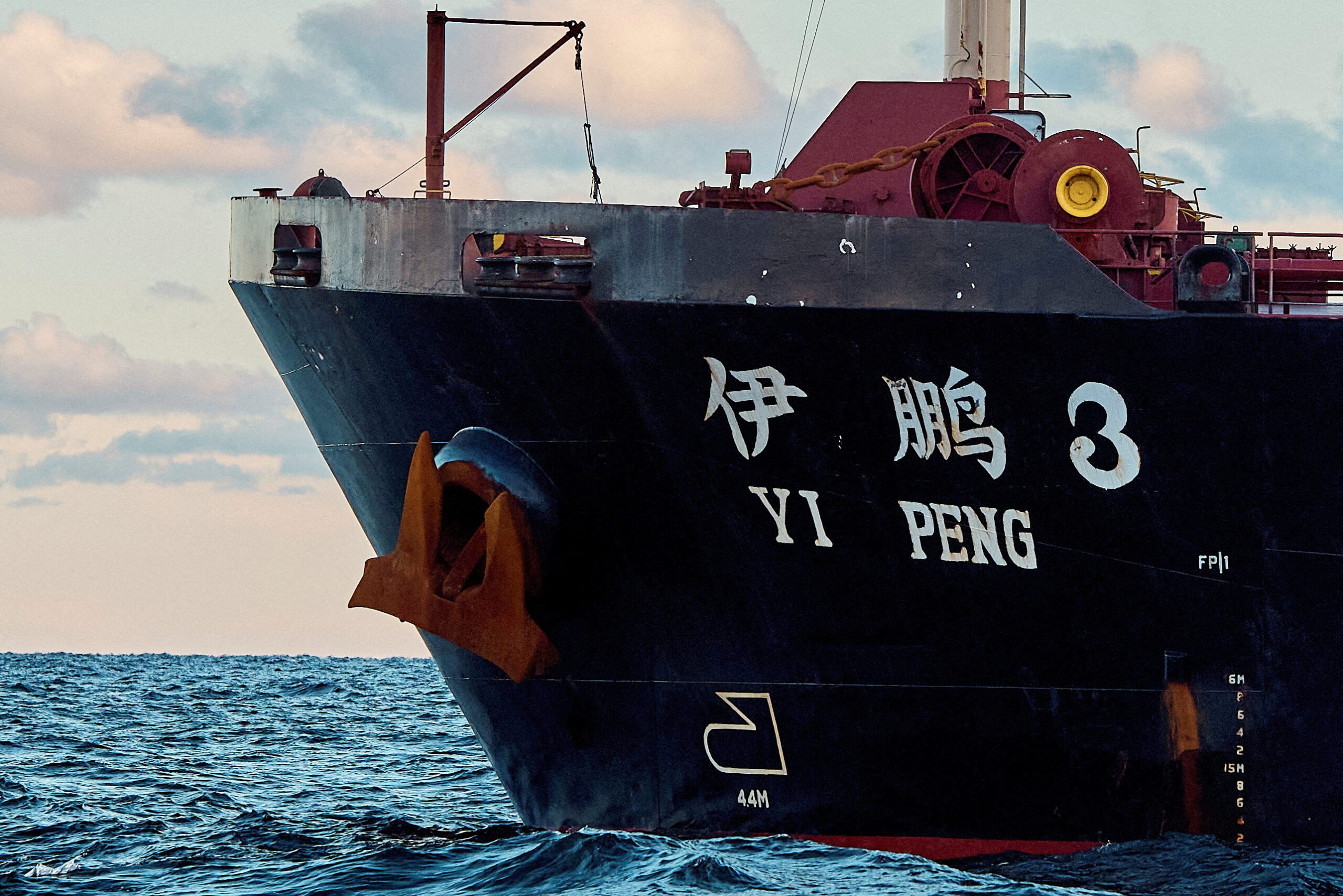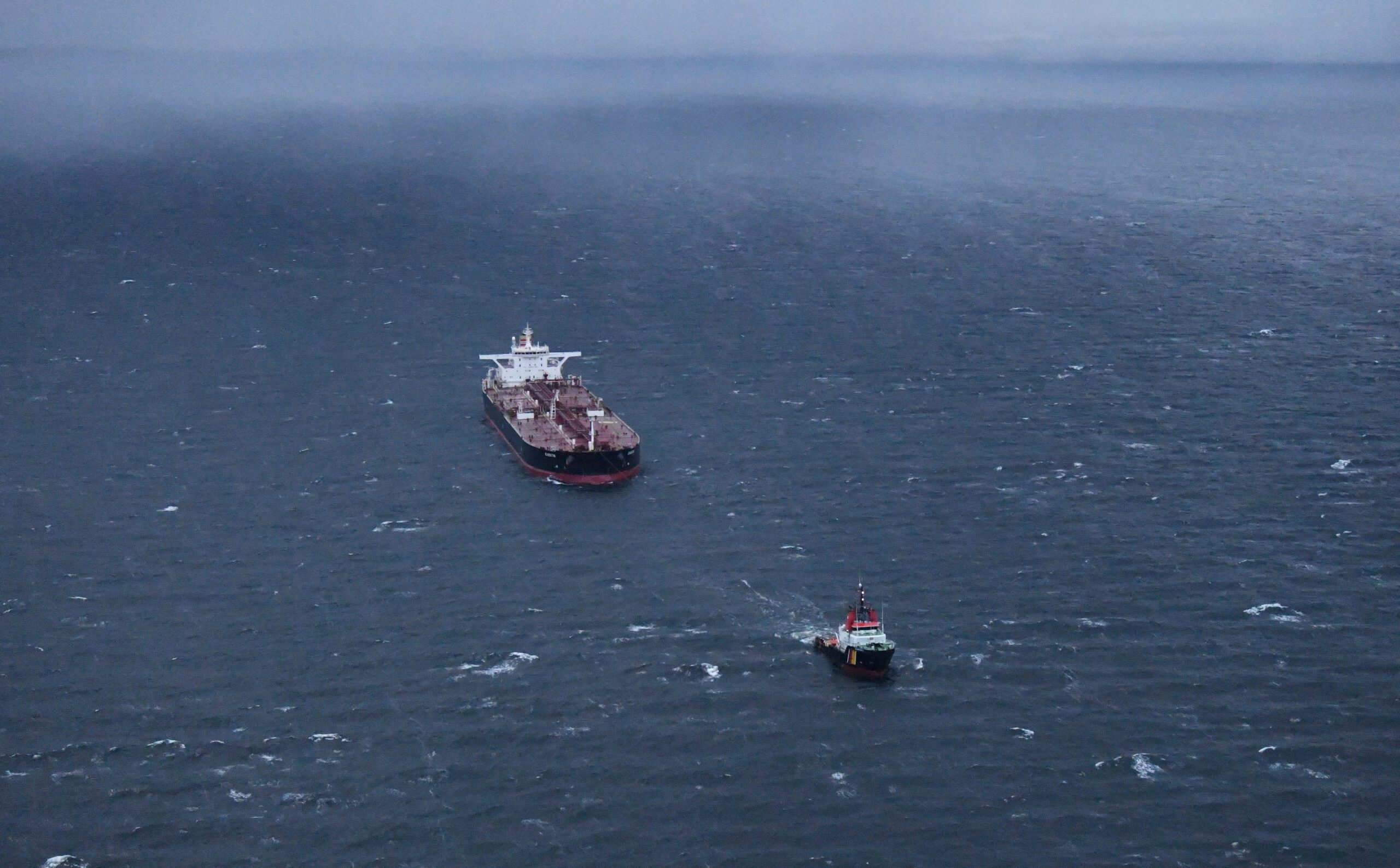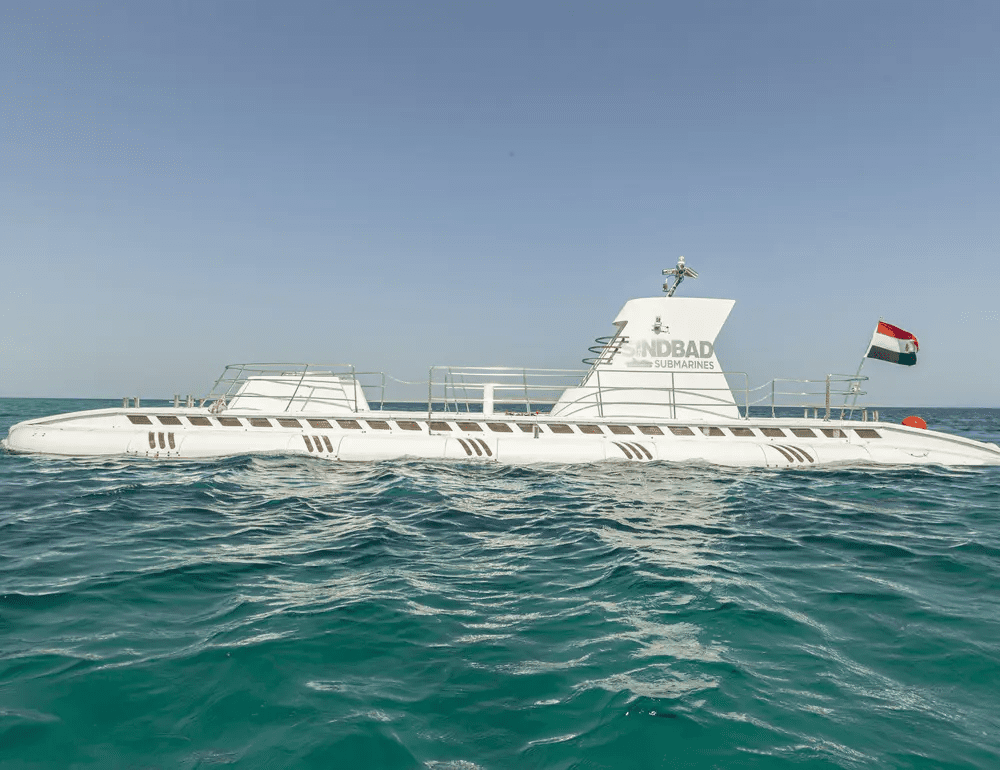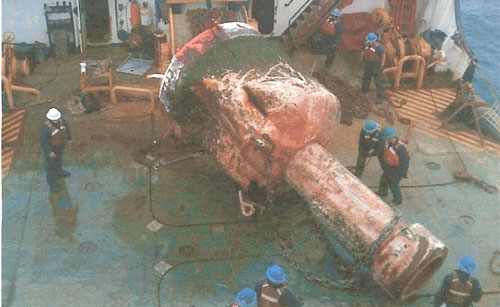
Bye Bye Buoy
By John Denham
The recent sinking of the “SF” Sea Buoy by possibly a large foreign-flag container ship causes more concern about ship management. In recent published articles we expressed concern about the size of ships and engines, simulator training and both management policy and ship management. All heralding the virtues of “the ordinary practice of seamen” i.e., Bridge Resource Management.
The predictions for casualties in 2009 are not encouraging as they indicate more errors caused by humans. January 2009 started with the question: How does a modern container ship operated by a leading maritime shipping company with the latest navigation equipment allide with a sea buoy located in a separation zone in a precautionary area? Obviously it takes a lack of team work and coordination. The secret to “making a buoy” successfully is to establish a steady bearing and decreasing range.( Rule 7 (d) (I) sound familiar?)
An examination of a possible scenario might help. The COSCO BUSAN is used as an excellent example of a typical modern containership in a probable loaded condition, however reportedly the suspect vessel was light loaded and was 52 feet more in LOA.
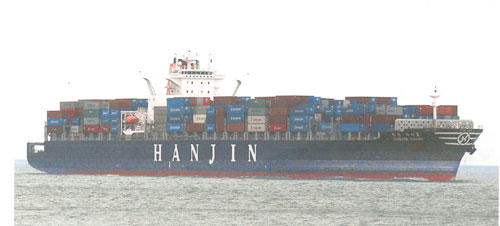
Photo courtesy COSCO-HANJIN
An observer should note, in the example, the navigation bridge is well aft, the stem is almost 600 feet forward, and as configured, there is approximately 15 rows of boxes, some 5 high in between the bridge and the forward mast. The line of sight from the Navigation Bridge extends the line of sight beyond the bow by almost three ship lengths i.e., or about 2700 feet or 900 yards. The top of the Pilot House radar antennae will probably detect a radar return from a lesser distance.
The suspect vessel’s line of sight was significantly better. Without a fore-deck full of containers and only a slight drag one might see at least one ship length beyond the bow, however the radar reception was probably beyond the visual line of sight. The “sea buoy” is three miles from the main ship channel entrance buoys #1 and #2; the pilot cruising area is half-way between. It was dark. It is assumed there was no attempt to allide with the navigation buoy and therefore the person(s) directing the navigation were not aware of its location, indicating either a lack of a proper lookout and a failure to maintain a proper navigation plot and an ineffective management of bridge resources( BRM).
The following scenario is possible:
On departing the bar channel between Buoy#1 and #2 the pilot slowed in order to disembark on the port side on a south westerly heading; putting wind and sea to starboard. The advance and transfer of the maneuver would place the ship about 1.5 miles south west of the channel entrance and about the same distance from the sea buoy that is almost to the west. Bound for Asia on a great circle track and advised to pass the sea buoy to starboard, the ship apparently headed for the North Outbound Traffic Lane. Speed was increased to “Full Ahead” and a course direct to the Northern Outbound Lane ordered. Rudder was applied, probably without thought for the significantly large course change at less than normal sea speed and the advance and transfer that would head the vessel directly toward the sea buoy. Without an alert bridge team and lookout the ship allided with the sea buoy, probably without notice. The first awareness was probably from the Engine room.
USCG released picture of the recovered, damaged sea buoy show a vertical puncture in the lower portion of the 32 foot buoy indicating a probable puncture by a propeller blade caused by a light loaded ship contacting and dragging the sea buoy it until was submerged.
The probable errors made are:
- The ship’s exact position was not known after the pilot departed.
- The advance and transfer of the ship was not considered when ordering a very large course change in a light loaded condition at reduced speed.
- The position of any hazards ( sea buoy) was not determined.
- A proper lookout was not posted and the bridge watch was not situationally aware.
Each item alone is a minor infraction of proper seamanship; all four coupled together create a major failure in ship management.
The Port Agent for the pilots, Pete McIsaac confirms the pilot disembarked on a south by west heading and advised the Master to pass the Sea Buoy to starboard. The pilot boat’s electronic data and the visual observations by the operator reported the buoys active location before the ship passed and that it was no longer visible after the outbound ship passed.
A typical mistake is to consider a departure with less command attention than an arrival. The same hazards exist except in reverse order. The distraction and confusions occurring in the change of operational status ( in port maneuvering, at sea operations, limited visibility, significantly increased surface contacts etc., demand increase attention by “the person direction the movement of the vessel.” A”sack”in football mostly occur when the quarterback does not adequately evaluate the defense. Again, the result of a gigantic vessel with an improperly functioning crew, lacking situational awareness and disregarding the ordinary practice of seamen. JGD
UPDATE:
The Board of Pilot Commissioners for the Bays of San Francisco, San Pablo and Suisun – January 22, 2009
Report of December 30, 2008. Commissioner Moloney explained that a SF buoy was reportedly struck by an outbound vessel after a pilot disembarked. Commissioner Osen suggested that this issue be discussed at a later date after receipt of the Coast Guard’s report. Mr. Ross Wheatley, representing the United States Coast Guard, was present in the audience and informed the Board that the Coast Guard had identified the vessel to be the OOCL LONG BEACH. He further informed the Board that this incident is currently under investigation. This item will be kept on the agenda until the Coast Guard’s report is available and has been reviewed. (Document Link)

 Join The Club
Join The Club






